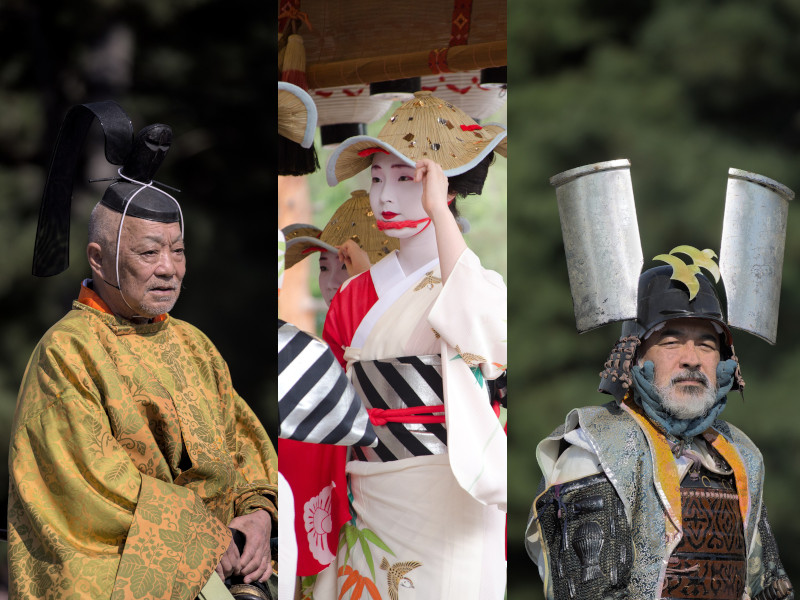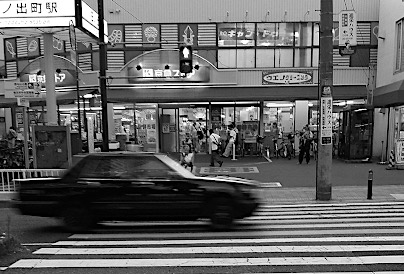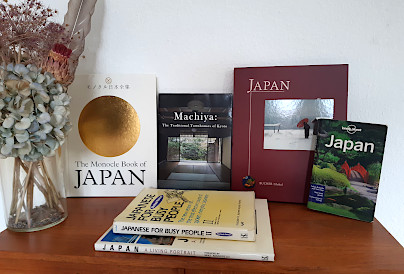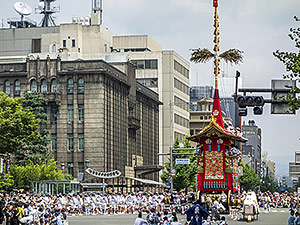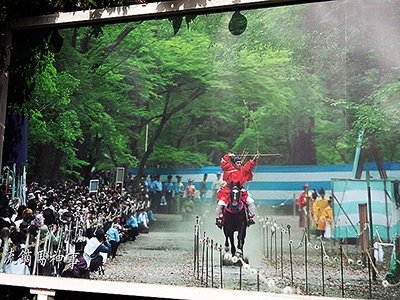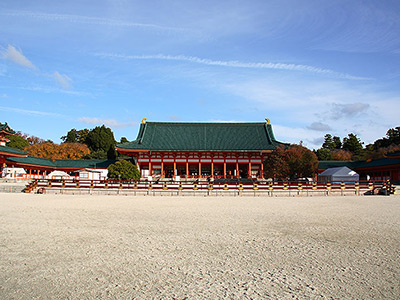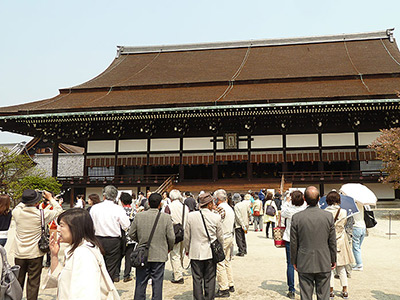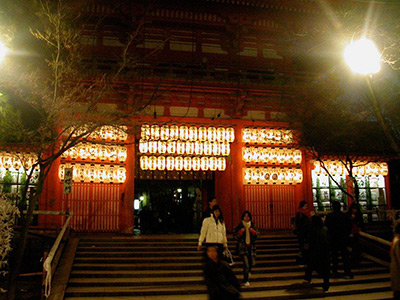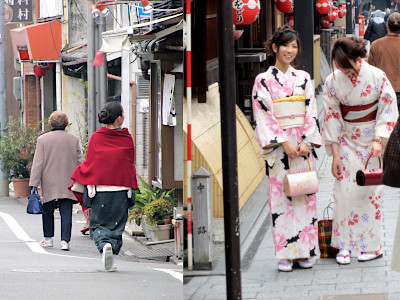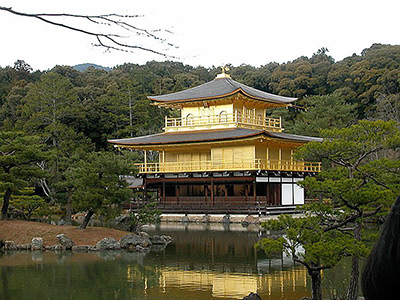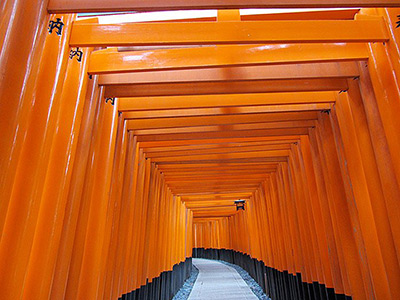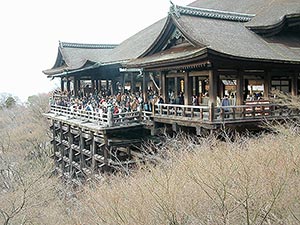Jidai Matsuri (Festival) in Kyoto
This post can contain affiliate links, which means that we may receive a small commission if you make a purchase using these links.
Facts & Figures
The Jidai Matsuri, otherwise known as the Festival of the Ages, held in October is one of the three major annual festivals alongside the Aoi Matsuri and Gion Matsuri in Kyoto.
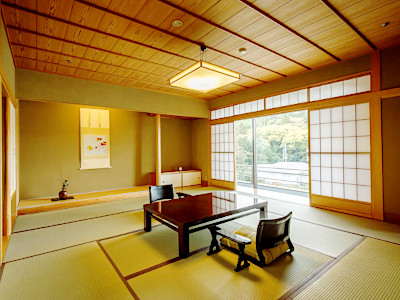 Explore Ryokans in Kyoto >
Explore Ryokans in Kyoto >
Ryokans are the perfect way to discover old Japanese culture and traditions.
The highlight of the festival is the large parade where over 2000 people of all ages get dressed in authentic costumes of the Japanese feudal history. Covering a timespan from the Heian period (794 - 1185) until the Meiji Restoration (1868). During this time Kyoto was the capital of Japan before Tokyo got this status in 1868. The parade will start at the Kyoto Imperial Palace and ends after several kilometers at the Heian Jingu Shrine. Jidai Matsuri was established in 1895 and it is celebrating the anniversary of the foundation of Kyoto. What makes it so special is that not only the costumes but also the music and the symbolism are historically correct. 12000 costumes and ceremonial items are used for the Jidai Matsuri. Historical figures will be also celebrated during the festival.
- Festival Information:
- The Jidai Matsuri is held every 22nd of October. The festival is so popular that it can get really crowded along the streets. It takes approx. 2 hours to see the whole procession passing by. The parade starts at 12 pm and arrives at around 2 pm at the Heian Jingu Shrine. The distance between Kyoto Imperial Palace and Heian Jingu Shrine is approx. 4.6 kilometres. Paid seatings are available at Kyoto Imperial Palace, on Oike Street, and at Heian Jingu Shrine. These tickets (3500 - 4500 yen) can be bought in advance (start 5th of Sep.) from convenience stores or via the internet. Due to the high demand, you have to be fast.
My tips for local activities
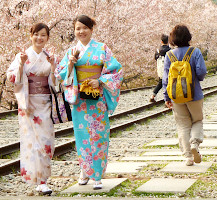
How about exploring the best parts of my favourite city Kyoto with a local guide? The personalized tour by our partner GetYourGuide can take between 2 - 8 hours. For more details check out this page >
Highlights
The festival’s main focus is the celebration of the 1100-year history of Kyoto as the capital of Japan. Every period of this long timespan gets its own section of the parade. There are in total 8 periods: Edo (1600 – 1868), Azuchi Momoyama (1568 – 1600), Muromachi (1338 – 1573), Yoshino (1333 – 1392), Kamakura (1192 – 1333), Fujiwara (794 – 1185), Enryaku (782 – 806) and 20 different groups with 70 horses and oxen are on display. It starts with costumes of the Meiji era and goes back to the Heian period. At first portable shrines (mikoshi) from the Kyoto Imperial Palace will be shown and people can pay their respect to the spirits of Emperor Kanmu (735 - 806) and Emperor Komei (1831 - 1867). Later you will see people dressed as geisha, warriors, priests, politicians, merchants, commoners, and important historical figures in their authentic costumes. At the forefront of the parade, you will see the honorary commissioners of the festival, who ride in horse-drawn carriages, reminiscent of the mid-1800s. These well-known commissioners include personalities such as the governor of Kyoto Prefecture, the mayor of Kyoto, and the city council chairman. The procession is followed by notable figures of the Meiji Restoration era, including a marching band with flutes and drums, soldiers who fought alongside the imperial forces, and some of the era's most illustrious figures like the samurai Sakamoto Ryoma (1836 - 1867), one of the architects of modern Japan. This is followed by the biggest section of the parade led by 3 horse riders (high-ranked officials). It symbolises the huge convoys sent by the shogun for significant imperial ceremonies in Kyoto, which happened from 1603 until 1868 (Edo Period). More time periods follow after the main section.
Location

Kyoto Imperial Palace (the start point of the Jidai Matsuri procession) is located in Kamigyo Ward in the center of Kyoto.
Address: Kyoto Gyoen 3, Kamigyo-ku, Kyoto, 602-0881
How to get to Kyoto Imperial Palace?
- 10min from Kyoto St. to Marutamachi or Imadegawa St. by Karasuma Subway Line
Sightseeing spots Kamigyo Ward
Top:
Kitano Tenmangu Shrine - The shrine is dedicated to the politician, poet, and scholar Sugawara no Michizane (845 - 903). All over Japan, there are appr. 12000 shrines to honor Sugawara no Michizane, but Kitano Tenmangu is the main shrine.
Read more >
Kyoto Imperial Palace - The palace was home to the Emperor and its family till 1868. Its origin dates back to 794.
Read more >
Shokokuji Temple - The temple belongs to the five great Zen temples of Kyoto (Kyoto Gozan). The construction of Shokokuji started in 1382 during the Muromachi Period (1336 - 1573).
Read more >
Festival & Events in Kyoto (dates can change without notice)
April
Miyako Odori (1st - 31th)
The traditional annual spring dance of the Kyoto district Gion Kobu performed by Geiko and Maiko is a must-see on your Kyoto visit. Don't miss the most popular dances the Miyako Odori "Cherry Blossom Dances" or "Dances of the Old Capital" at the Gion Kobu Kaburenjo Theater (located close to Gion Corner).
May
Aoi Matsuri (15th)
The highlight of this festival is a large parade from the Imperial Palace through the Shimogamo Shrine to the Kamo Shrines. More than 500 people wearing aristocratic costumes from the Heian Period (794 - 1185). The Aoi Matsuri belongs with the Gion Matsuri and Jidai Matsuri to the three most famous festivals in Kyoto.
Arashiyama Mifune Matsuri (third Sunday of May)
The first part is held at the Kuramazaki Shrine. Later a procession leads to the Oi River, where more ceremonies and traditional dances (Funa Asobi) are held. The Arashiyama Mifune Matsuri started in 1914.
July
Gion Matsuri (whole month)
The month of July is full of different events like the Yoiyama - Kyoto's Magical Night (locals in kimonos look at the giant Gion floats the day before the parade) or the famous Yamaboko Junko (float procession on the 17th of July).
October
Jidai Matsuri ("Festival of Ages") (22nd)
People celebrate with a large parade between Imperial Palace to Heian Shrine the anniversary of the foundation of Kyoto. Approx. 2000 participants wearing historical costumes from different time periods. Enjoy this great festival which lasts around 2 hours.
Where to stay in Kyoto?
Day trips from Kyoto:
My 100 Best Moments in Japan
I have visited Japan nearly every year since 2004. This is my collection of the 100 best moments in my favorite country. Enjoy the pictures and I hope you will start your own journey soon.
Find out more >
Books about Japan
Reading books is a great source of inspiration for me. Check out my recommended list of books about the fascinating country Japan.
My Book recommendations >

